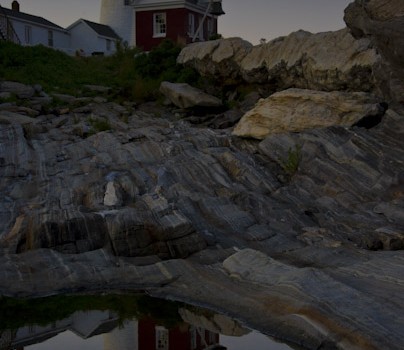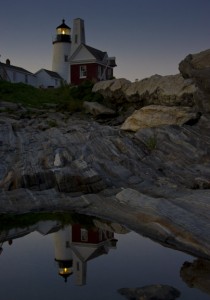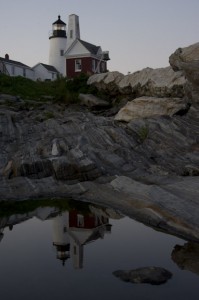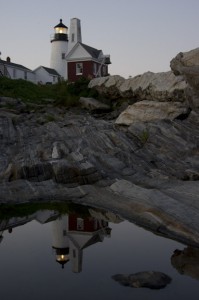Since we are on the topic of lighthouses I thought I would share four suggestions on how to get your best shots. These may seem obvious to you now but when you are out in the thick of battle some things become a bit less obvious and your composition will suffer.
First- If you are doing a grand scenic shot choose a composition that includes water (and rocks if they are present). A photo of a lighthouse without water removes any context from the image. Lighthouses are where they are to protect boats (which float on water) from shallows and rocks. So by including both water and rocks (or whatever boats need protection from) in your composition you are telling the complete story of the lighthouse.
Second- Always wait for the light in the lighthouse to appear to push your shutter. A lightless lighthouse looks dead and forgotten but with the light visible the lighthouse looks strong and alive and ready to warn away passing ships. All lighthouses have a cadence to their lights which makes the appearance of the light predictable. Just count the seconds of the interval a couple of times and be ready to shoot when the next interval comes around. There are some lighthouses where the light is never visible (its shielded) to people on land. For these I try to pick a time and viewing angle that puts the rising or setting sun directly behind the glass crown of the lighthouse. This illuminates the lighthouse and nicely animates it.
Third- Shoot at twilight. Twilight is the time of day 45 minutes before sunrise and 45 minutes after sunset. During this time the sky gets to be a beautiful cobalt blue and there is just enough light to show details in the landscape. Everyone always shoots lighthouses at sunrise or sunset but I think twilight is better. Besides, twilight always happens no matter the weather but sunrise and sunset are very temperamental.
And finally- Rather than taking the same old, same old shot look for some other way to photograph the lighthouse. Is there a puddle nearby that might hold a good reflection? How about a window for a reflection? Have you thought about doing just a piece of the lighthouse- the top or window or from inside? Are there grasses nearby that could act as a foreground or other buildings that could be used in your composition? How about a different time of the year? during a winter storm? On a clear starry night?
Lighthouses are wonderful subjects to photograph but don’t always go and try to do the same thing each time. Try something different, you may be surprised at what you get.




